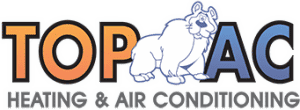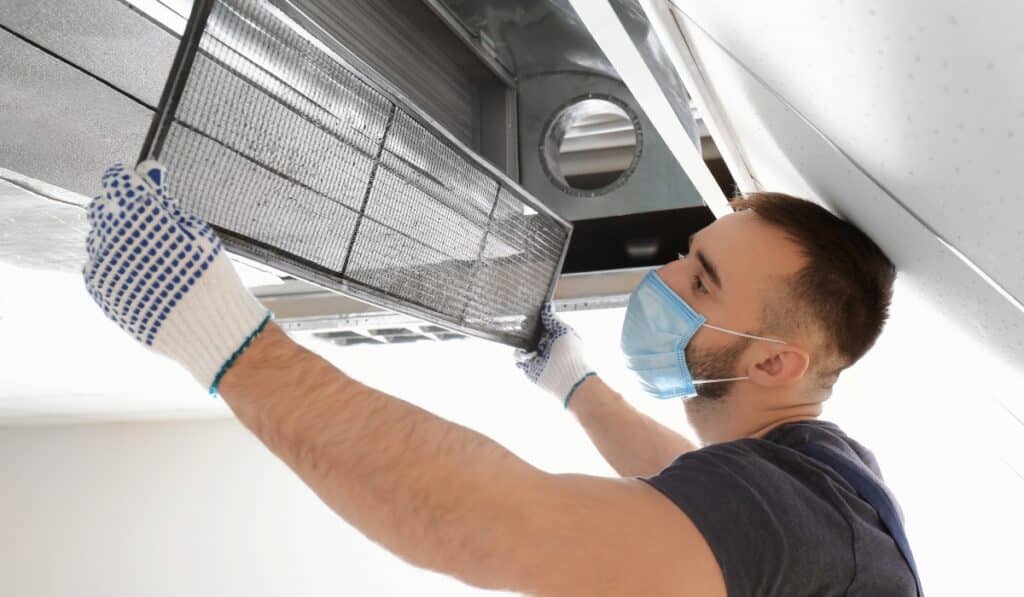The air we breathe indoors significantly impacts our health and well-being. While we might focus on outdoor air quality, maintaining clean air within our homes is equally important. This is where HVAC filters play a crucial role. These unsung heroes of your heating, ventilation, and air conditioning system silently trap dust, allergens, and other airborne contaminants, ensuring you breathe cleaner, healthier air.
However, with an array of HVAC filter options available, choosing the right one can be overwhelming. Don’t worry; this comprehensive guide will equip you with the knowledge to navigate the world of HVAC filters and select the perfect fit for your needs.
Unveiling the Mystery: MERV Ratings and Filter Efficiency
Before diving into specific filter types, let’s understand a critical factor: MERV (Minimum Efficiency Reporting Value). This standardized rating system indicates a filter’s effectiveness in capturing airborne particles. MERV ratings range from 1 (least efficient) to 16 (most efficient).
Here’s a general guideline to keep in mind:
- Lower MERV (1-4): These filters capture large particles like dust and lint but are less effective for allergens and smaller contaminants.
- Medium MERV (5-8): These filters offer better filtration, trapping dust mites, pollen, and mold spores.
- Higher MERV (9-16): These filters provide the highest level of filtration, capturing microscopic allergens, bacteria, and even some viruses.
Remember: Higher MERV filters offer superior air quality but can also restrict airflow, impacting your HVAC system’s efficiency. It’s crucial to choose a filter with the right balance of filtration and airflow for your specific system. Consulting an HVAC professional is recommended to ensure optimal performance.
Types of HVAC Filters
Now, let’s delve into the various types of HVAC filters available, each with its unique advantages and considerations:
Fiberglass Filters: The Budget-Friendly Choice
- Pros: Affordable, readily available, easy to install.
- Cons: Low MERV rating (typically 1-4), captures only large particles, needs frequent replacement (every 1-2 months).
Fiberglass filters are the most basic and economical option. They are constructed from woven fiberglass strands and can trap larger dust particles and lint. However, they offer minimal filtration for allergens and smaller contaminants. Due to their low efficiency, they need frequent replacement, typically every 1-2 months, to maintain optimal air quality.
Pleated Filters: A Step Up in Performance

- Pros: More efficient than fiberglass filters (MERV rating 5-8), captures dust mites, pollen, and mold spores, readily available, and affordable compared to higher-grade filters.
- Cons: It may not be suitable for severe allergies and needs regular replacement (every 2-3 months).
Pleated filters are popular, offering a significant step up from fiberglass filters in performance. They are constructed from pleated polyester or cotton fabric, providing a larger surface area for capturing airborne particles. Pleated filters typically have a MERV rating of 5-8, effectively trapping dust mites, pollen, mold spores, and pet dander. While not ideal for severe allergies, they balance affordability and filtration for most households. They typically require replacement every 2-3 months to maintain efficiency.
Electrostatic Filters: A Charged Approach to Air Purification
- Pros: Due to its static charge, it can capture smaller particles than standard filters, which may extend your HVAC system’s lifespan by reducing dust buildup on components.
- Cons: Effectiveness can diminish as the filter becomes dirty, requires cleaning instead of replacement (though replacement filters are available), and may not be as effective as higher-grade filters for allergens.
Electrostatic filters utilize static electricity to trap airborne particles. They have a metallic mesh that attracts dust, allergens, and other contaminants like a magnet. While they offer advantages over traditional filters, their effectiveness can decrease as they become loaded with particles. Electrostatic filters are typically washable and reusable, but replacement filters are also available. However, they might not be the most suitable option for households with severe allergies as they may not capture the most minor allergens as effectively as HEPA filters.
HEPA Filters: The Gold Standard for Clean Air
- Pros: Exceptionally high filtration efficiency (MERV 17-20), captures 99.97% of airborne particles as small as 0.3 microns (including bacteria and viruses), ideal for allergy and asthma sufferers.
- Cons: The most expensive option can restrict airflow, reduce HVAC system efficiency (consult an HVAC professional for compatibility), and require replacement every 12-18 months.
HEPA (High-Efficiency Particulate Air) filters are the undisputed champions of air filtration. They boast a MERV rating of 17-20 and capture 99.97% of airborne particles as small as 0.3 microns. This includes dust, allergens, pollen, mold spores, bacteria, and viruses. HEPA filters are ideal for households with severe allergies, asthma, or respiratory sensitivities.
However, with great power comes responsibility. HEPA filters are the most expensive option and can restrict airflow more significantly than other filter types. This can impact your HVAC system’s efficiency and lead to higher energy bills. It’s crucial to consult an HVAC professional before installing a HEPA filter to ensure compatibility with your system. Depending on usage and air quality conditions, HEPA filters typically require replacement every 12-18 months.
Media Filters: A Blend of Efficiency and Affordability
- Pros: They offer a good balance between filtration and airflow (MERV rating 8-14), capture a wide range of airborne contaminants, including allergens and pet dander, are reusable and washable (depending on the type), and can be more cost-effective in the long run compared to disposable filters.
- The cons are that it may require more frequent cleaning than other filter types (every 2-4 weeks) and that the initial cost can be higher than disposable filters.
Media filters provide a compelling alternative to HEPA filters, offering a good balance between efficiency, affordability, and airflow. They are typically constructed from pleated synthetic materials or woven fiberglass with a higher density than standard filters. This allows them to capture a broader range of airborne contaminants, including allergens, pet dander, and dust mites. MERV ratings for media filters typically range from 8 to 14.
A significant advantage of media filters is their reusability. Depending on the specific type, some can be washed and reused multiple times, translating to long-term cost savings compared to disposable filters. However, they may require more frequent cleaning every 2-4 weeks to maintain optimal performance. The initial cost of a media filter can also be higher than disposable options.
UV Light Air Filters: Adding an Extra Layer of Protection

- Pros: It works with a standard filter to kill bacteria, viruses, and mold spores trapped in the filter. It can extend your HVAC system’s lifespan and may help reduce odors.
- The cons are that it doesn’t capture airborne particles, requires a compatible HVAC system, and requires ongoing maintenance for UV bulb replacement.
UV light air filters offer an additional layer of protection by utilizing ultraviolet light to kill bacteria, viruses, and mold spores trapped on the standard air filter. This can be particularly beneficial for households concerned about germs or mold growth. However, it’s important to remember that UV light air filters don’t capture airborne particles. They work in conjunction with a standard filter to enhance air purification.
Another consideration is compatibility. Not all HVAC systems are equipped to handle UV light air filters. Additionally, ongoing maintenance is required, as the UV bulb needs periodic replacement to ensure effectiveness.
Carbon Filters: Targeting Specific Odors and VOCs
- Pros: Effectively adsorbs odors, smoke, and volatile organic compounds (VOCs), ideal for households with pets, smokers, or chemical sensitivities.
- The cons are that it doesn’t capture airborne particles, requires replacement every 2-3 months, and may not be suitable for overall air filtration needs.
Carbon filters target air quality concerns, particularly odors, smoke, and volatile organic compounds (VOCs). These filters contain activated carbon, a highly porous material that adsorbs these unwanted airborne contaminants. Carbon filters are ideal for households with pets, smokers, or those sensitive to chemical off-gassing from furniture or cleaning products.
It’s important to note that carbon filters don’t capture airborne particles like dust or allergens. They are typically used with a standard air filter for comprehensive air purification. Carbon filters require regular replacement, typically every 2-3 months, to maintain effectiveness.
Choosing the Right Filter: Tailoring Your Air Quality Solution
Selecting the most suitable option with various HVAC filters can seem daunting. Here are some key actors to consider when making your choice:
- Your Indoor Air Quality Needs: Do you have allergies, asthma, or other respiratory sensitivities? Do you have pets or concerns about odors? Identifying your primary air quality concerns will guide you toward the most appropriate filter type.
- Your HVAC System: Not all HVAC systems are compatible with all filter types. Consult your HVAC system’s manual or a professional to ensure the chosen filter matches your system’s airflow requirements.
- Balance Between Filtration and Airflow: Higher MERV filters offer superior filtration but can restrict airflow, impacting your system’s efficiency. It’s crucial to balance capturing contaminants and maintaining optimal airflow for your specific system.
- Maintenance Requirements: Consider the maintenance requirements of different filter types. Disposable filters require frequent replacement, while washable options require cleaning. Choose a filter that aligns with your maintenance preferences.
- Budget: HVAC filter costs vary depending on type and MERV rating. Disposable filters are generally the most affordable, while HEPA filters are the most expensive. Factor in
- replacement frequency when considering overall costs.
While this guide provides valuable information about various HVAC filter types, consulting a qualified HVAC professional is highly recommended. They can assess your needs, recommend the most suitable filter for your system, address indoor air quality concerns, and ensure compatibility with your HVAC unit. A professional can also advise on proper filter replacement schedules to maintain optimal air quality and system efficiency.
Breathe Easy with TOP AC Inc.
At TOP AC Inc., we understand the importance of clean, healthy air for your home and family. Our team of qualified HVAC professionals can help you navigate the world of HVAC filters and recommend the perfect solution for your needs. We offer a comprehensive range of HVAC services, including filter replacements, system maintenance, and air quality assessments.
Contact TOP AC Inc. today to schedule a consultation and breathe easy with the confidence of knowing your indoor air is healthy and clean.

